Boston. Beantown. City on a Hill. The Athens of America. The Cradle of Liberty. So many nicknames for this one city in the state of Massachusetts, and all due to its long history starting back in colonial times. One nickname sticks out the most for Hitch and me while on our first visit to this area: America’s Walking City. Thanks to her compact and high-density nature, walking is the chosen and most effective mode of transportation. And just so happens to be our chosen method of seeing Boston and the National Historical Park within her.
The Freedom Trail: Path of the Boston National Historical Park
Armed with the Boston NPS app on my smartphone, we head out from our Airstream to meet up with our friends Ted & Tracy, and then toward Boston. After parking at the Constitution Center, we quickly find a red brick trail and follow it in a Northeasterly direction, toward the Charlestown Navy Yard. The red brick trail is famously known as the Freedom Trail. This 2.5-mile-long path through downtown Boston passes by 16 locations significant to the history of the United States. Stops along the trail include simple explanatory ground markers, graveyards, colonial churches and famous buildings, and a naval frigate. All of which we tried to see in one day.
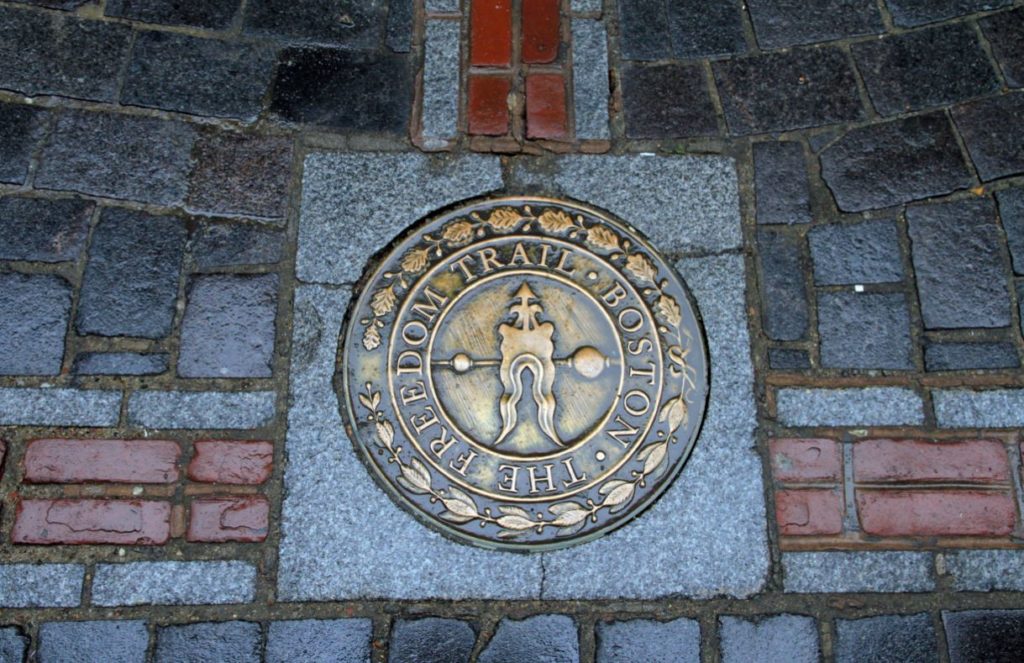
Boston Freedom Trail
Charlestown Navy Yard
Our first stop is the Boston Navy Yard, also known as the Charlestown Navy Yard or the Boston Naval Shipyard. Within the Boston Inner Harbor, resides one the oldest shipbuilding facilities in the United States Navy. Established in 1801 under President John Adams, she served for 175 years, when they closed her active naval status and transferred property over to the National Park Service in 1975.
Enough of the yard remains in operation to support the U.S.S. Constitution, the oldest warship still commissioned in the United States Navy, and the U.S.S. Cassin Young, a 1943 World War II-era Fletcher-class destroyer now serving as a museum.
U.S.S. Cassin Young
U.S.S. Cassin Young survived seven World War II Pacific battles, two Kamikaze hits, and then served another decade beyond her required lifespan. Today, she displays herself as a fine example of the Fletcher-Class destroyers that were produced in the modern era of the Boston Navy Yard.
Wandering inside her metal hull, I’m amazed that the cramped halls could complement a crew of 325. I thought the officer bunks were uncomfortably confined, and then we see the tight enlisted bunks in the forward section. Also available for viewing is the galley, office rooms, and surgery room. On the bow, the Mark 12 5″/38 caliber guns are something to behold, since they can shoot ammo weighing up to 55 pounds.
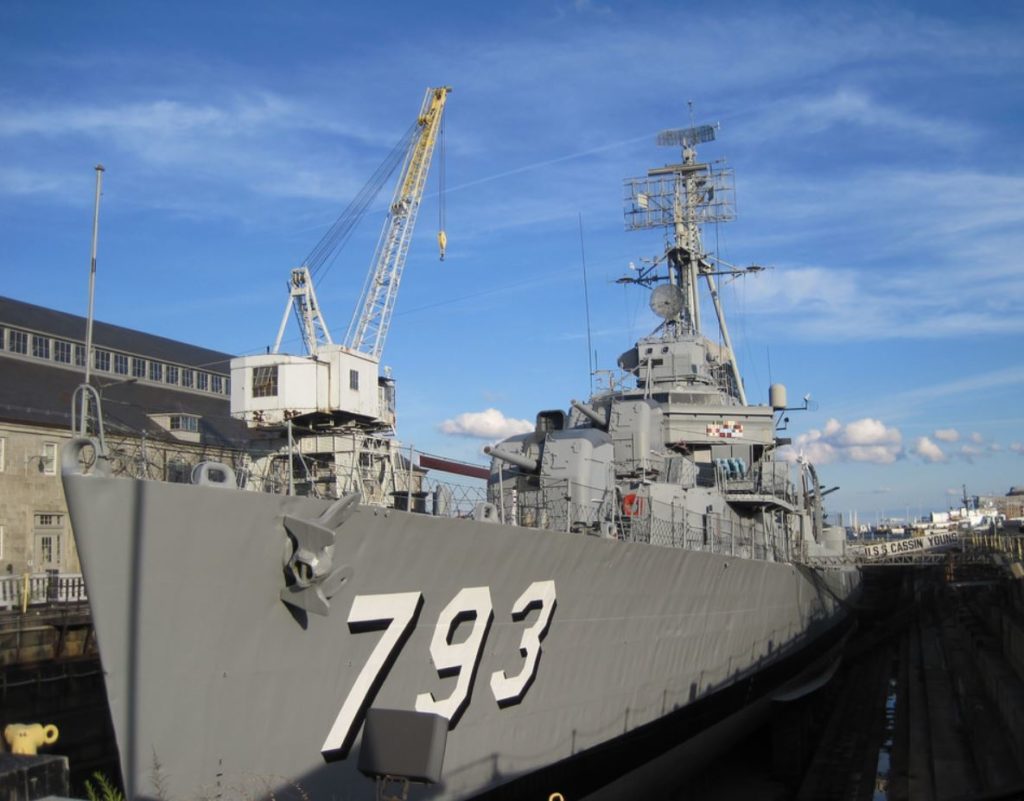
USS Cassin Young
U.S.S. Constitution
We push past other tourists and make our way to another dry dock, using the three great masts of Old Ironsides as a guide. The U.S.S. Constitution got much of her fame from the War of 1812 against the United Kingdom. During that war, she defeated five British warships and earned the nickname of “Old Ironsides.” Today, the U.S.S. Constitution is the oldest commissioned ship in the United States Navy. A real navy crew still serves aboard her, operating the ship as a historic site in cooperation with the National Park Service.
On the day we took a tour of her deck and hull, she was still in the final weeks of her two-year restoration. The navy spent nearly $15 million fitting new copper sheets on the ship’s hull, replacing deck boards, and a new paint job. According to the news, the U.S.S. Constitution returned to the water on July 23, 2017, just two weeks after our visit.
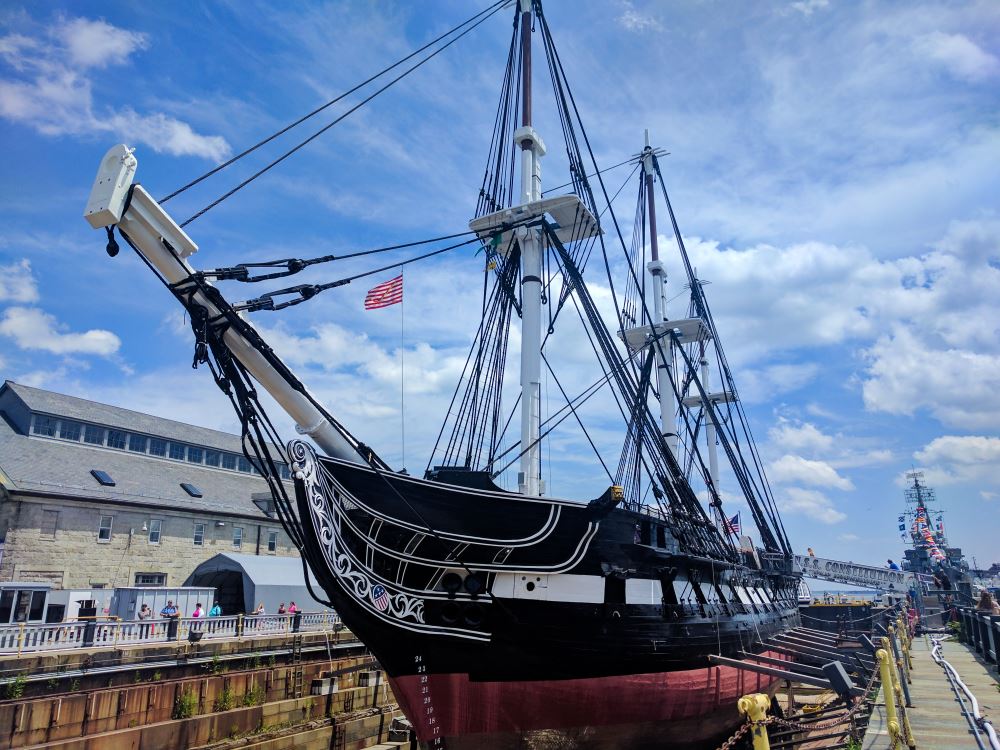
USS Constitution – My favorite location in the Boston National Historical Park
Bunker Hill Monument & Museum
From the Navy Yard, we follow the red-brick up toward Bunker Hill Monument, using the 221-foot granite obelisk as a beacon for our destination. As we stand near the statue of William Prescott, we hear something wholly unexpected: musket fire! Around the corner near the 19th-century lodge and at the base of the monument, we find a crowd of people watching a group of colonials fire their muskets. I double check my Boston NPS app for events at Bunker Hill and realize that this is the “Men, Muskets, and Liberty” event, where they regularly hold musket demonstrations.
We make our way to the to the Bunker Hill Museum across the street, in the old Charlestown Branch building of the Boston Public Library. Inside a museum installed in 2007, houses the Battle of Bunker Hill exhibit, details on the Monument’s construction, and information on Charlestown history.
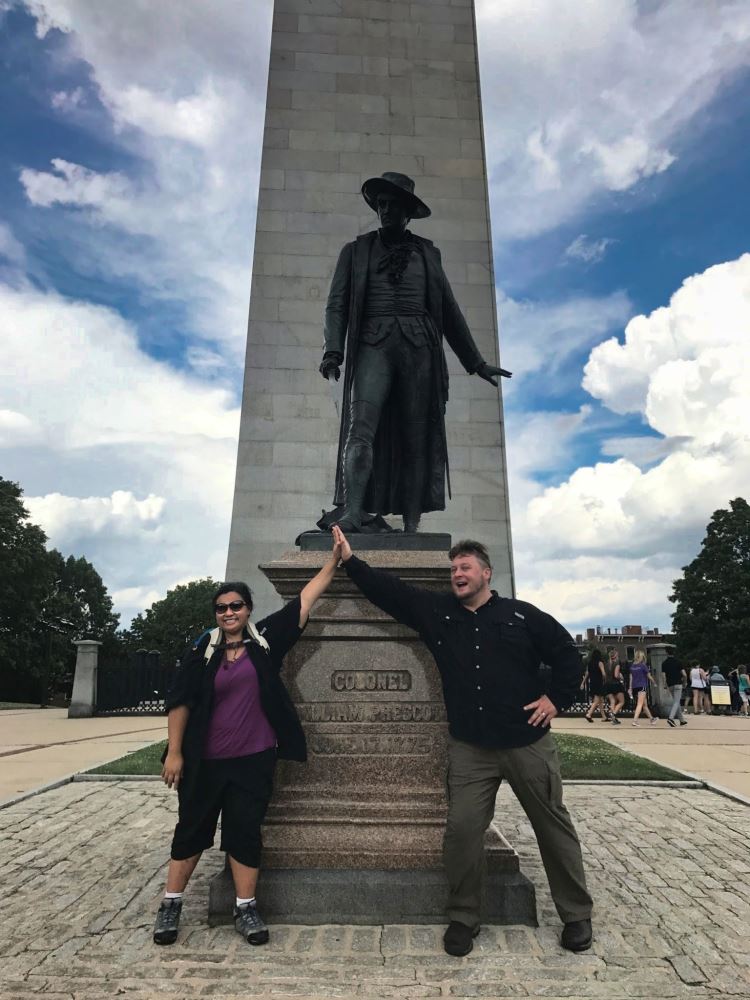
Not the museum, but our Obligatory Boston Photo!
Copp’s Hill Burying Ground
Back on the Freedom Trail, we make our way past the Training Field, City Square Park, and across the Charlestown Bridge to Copp’s Hill Burying Ground. I take solumn delight in reading the epitaphs of notible Boston colonials and marvel at gravestone art nearly 200 years old. We even search for the tomb of the Mathers, where both Increase and Cotton (the famous Puritan ministers involved in the Salem Witch Trials) were interred.
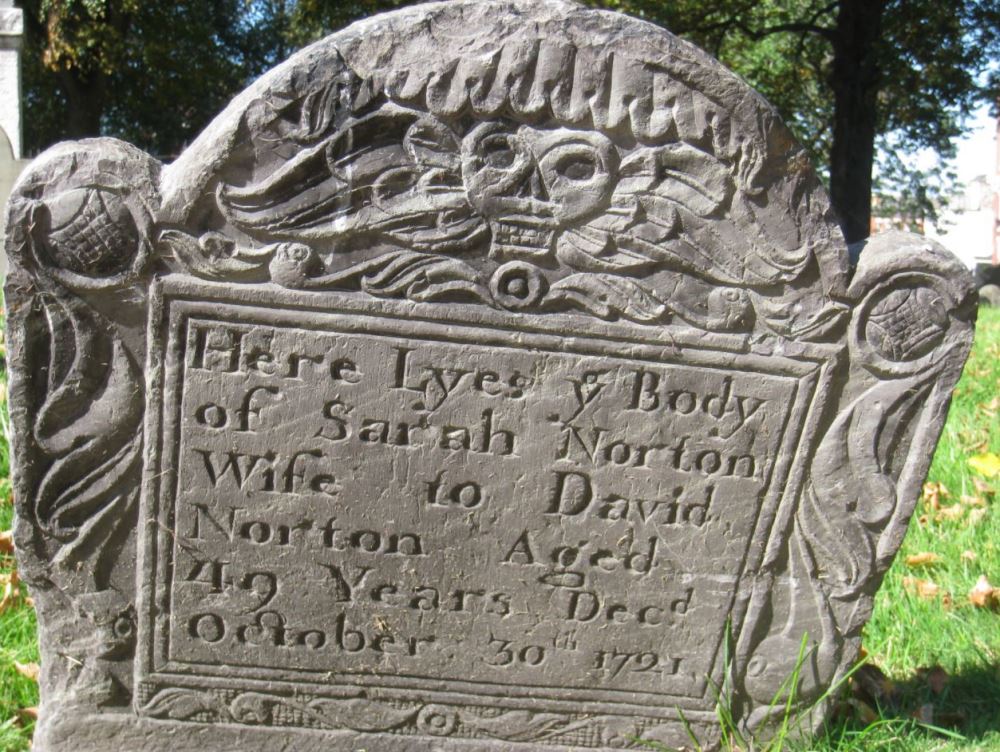
Copps Hill Burial Ground
Old North Church
Just a few yards down, we make our way to the Old North Church. From the cobblestone alley, I look up at the steeple and imagine the signal lights: “One if by land, two if by sea,” just as Paul Revere readies his horse for the midnight ride. The lanterns were hung for less than minute to avoid the attention of British troops. That’s all they needed to signal the militia waiting across the river in Charlestown.
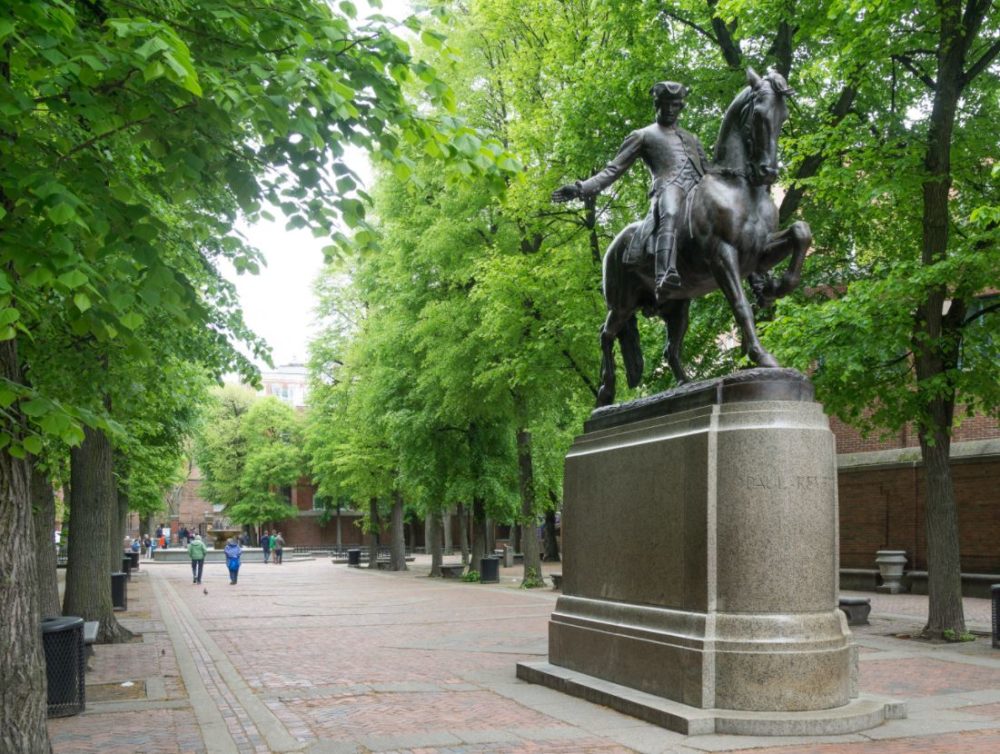
Paul Revere Statue
Paul Revere House
Back on the Freedom Trail, we make our way to the heart of Downtown Boston and The Paul Revere House. The original three-story house was built about 1680, making it the oldest house in downtown Boston. Back then the wood building was known as Second Church of Boston’s parsonage, home to the Puritan ministers Increase Mather and Cotton Mather. A 1676 fire consumed most that building, but the rebuilt house later became the home of the Revers in the late-1700s. Amazingly, about 90% of the structure is original to 1680 exists today, ready for those who pay the admission fee to see it.
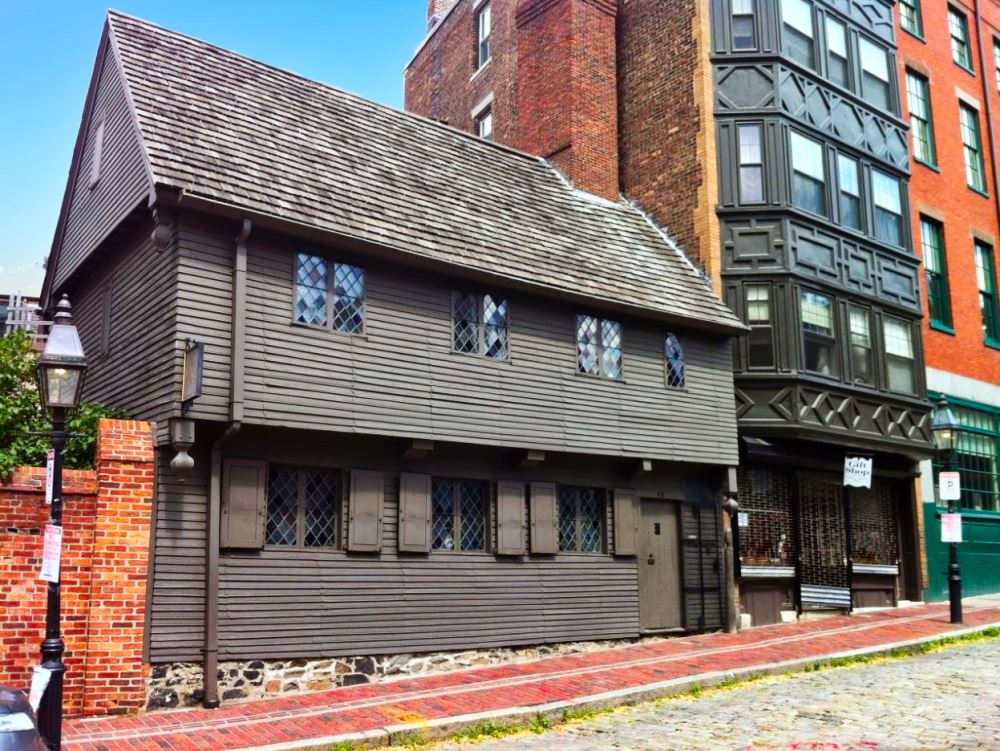
Paul Revere House
Faneuil Hall
When we reach Faneuil Hall, we pause a moment at the foot of Samual Adams statue. I stare up at the red brick walls and white rim arched windows. Famous orators such as Samuel Adams, James Otis, and Frederick Douglass plied the crowds with emotional words, pushing for action and change.
On the other side, near the marketplace, we push past crowds to get a quick look at the Golden Grasshopper weathervane. Placed there when the hall was built in 1742, the grasshopper remains one of the few artifacts original to Faneuil Hall.
On the ground floor, market area smells of food and the sounds of crowds overwhelm me, so we make our way up to the meeting hall. Here we find stately paintings hung above a stage, rows of wooden chairs aim at attention, and white columns supporting balconies on either side. What did Samuel Adams voice sound like, as he rallied the people against unjust taxation in 1773? How much passion was there in the air as Julius Caesar Chappelle, one of the first black legislators, implored the listeners to support a bill that would help give blacks the right to vote back in 1890? Only these walls would truly know.
On the top floor, resides a museum of uniforms, firearms, swords, artifacts, memorabilia and other relics belonging to the Ancient and Honorable Artillery Company of Massachusetts. Sadly, we have to come back another day to view the Company’s museum.
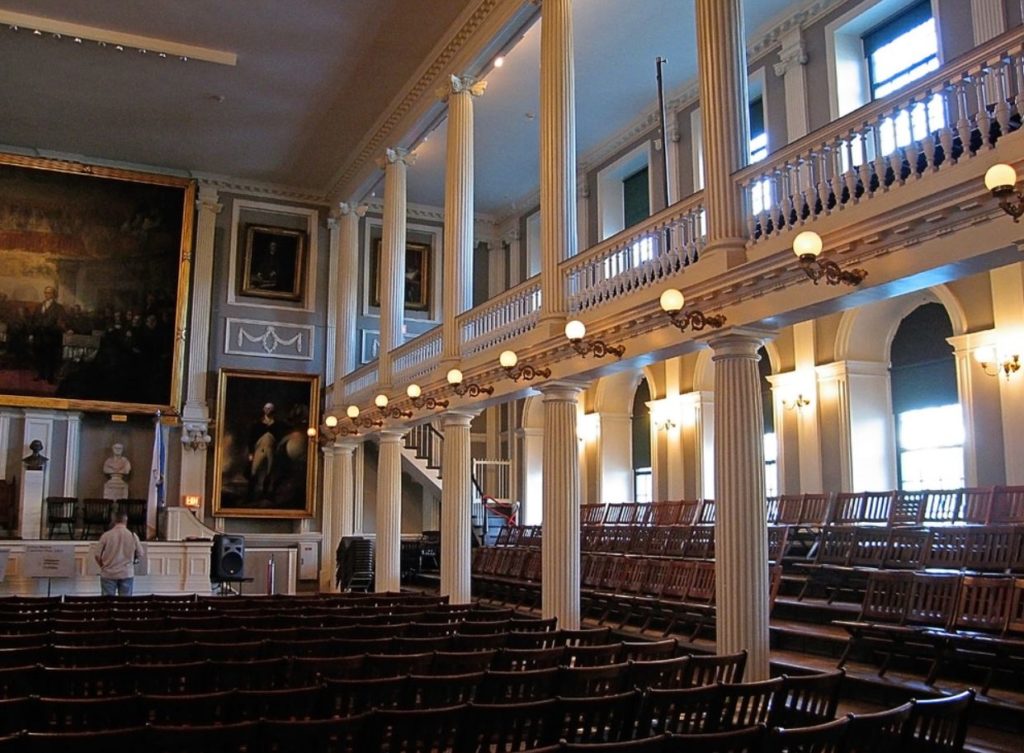
Faneuil Hall
Old State House
Back outside, we reorientate our selves on the Freedom Trail and head toward the Old State House. The Old State House is the oldest and most important public building in American history prior to the Revolution. President John Adams insisted that this is where “Independence was born.” Built-in 1713 to house the government offices of the Massachusetts Bay Colony, she bears the symbols of that old regime: a lion and unicorn. The originals were burned long ago, and only the replicas remind us of what the building once looked like.
The square beneath the balcony marks the site of the Boston Massacre of 1770, when a handful of British soldiers fired into a taunting crowd and killing five men. Just six years later, the Declaration of Independence was proclaimed from that same balcony. Today, skyscrapers surround the Old State House, while inside a museum and library house our treasured history.
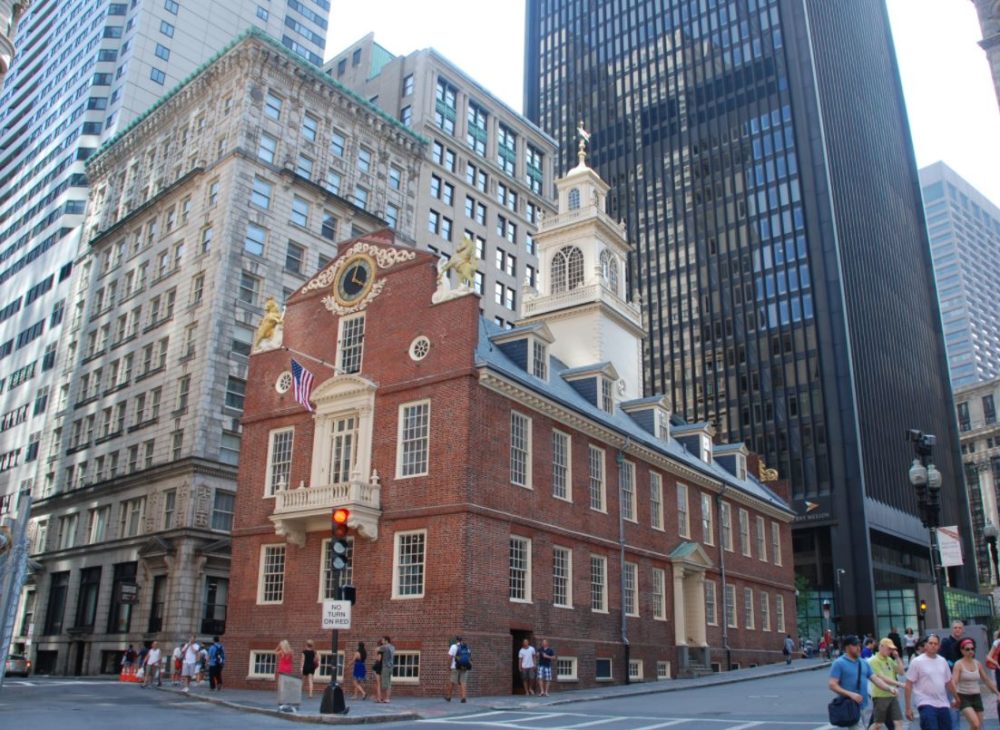
Old State House
Old South Meeting House
For our last stop on the Freedom Trail, we make our way to the Old South Meeting House. In 1773, 5,000 colonists packed within her walls and heatedly argued on how to resist a shipment of taxed tea. Negotiations failed and a signal was given soon after. About 150 sooty-faced men, poorly disguised as Native Americans, stormed out of buildings and overtook the British ships of Griffin’s Wharf. Hours later, they destroyed 342 chests of the imported tea.
Today Old South remains a location for catalytic ideas by sponsoring public forums, debates, concerts, and theatrical presentations. The exhibit “Voices of Protest,” recounts the inspirational, sometimes disturbing, and often provocative stories of Boston history.
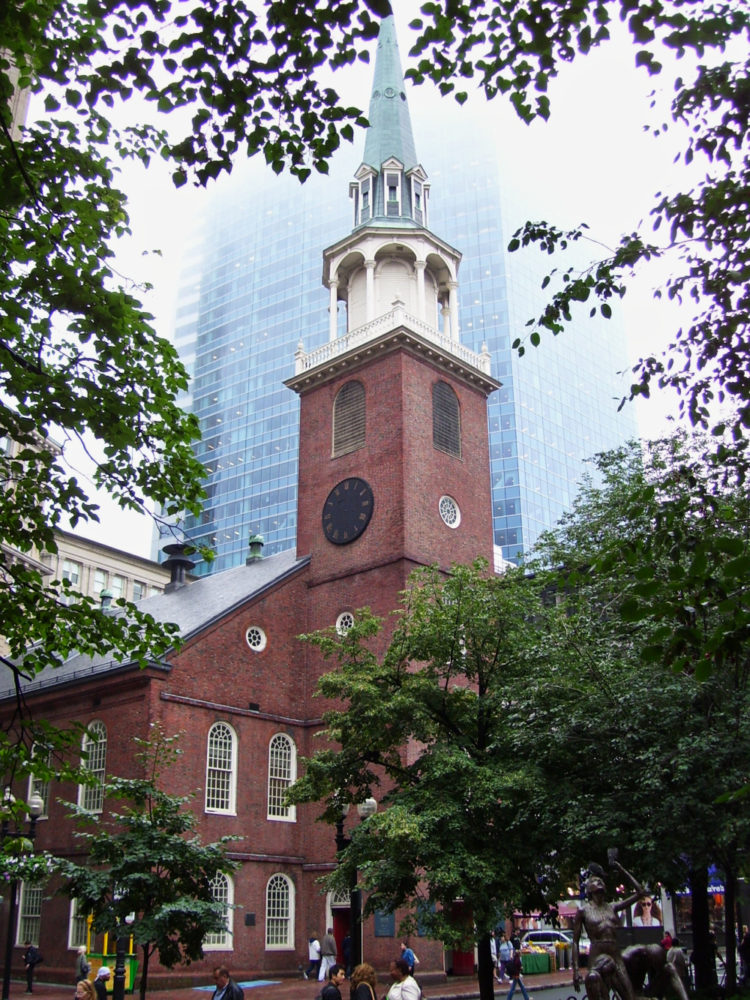
Old South Meeting House
A Ferry Back to Charlestown
Unfortunately, this is where our tour ended — at only half of the 16 sites on the Freedom Trail. We’ll have to save the Boston Common, Massachusetts State House, Park Street Church, Granary Burying Ground. King’s Chapel, King’s Chapel Burying Ground, Benjamin Franklin Statue & Boston Latin School, and Old Corner Bookstore for another day.
We make our way to the Water Shuttle Dock at the end of Long Wharf. For less than $4 a person, we take a relaxing water taxi back to the Charlestown Navy Yard and wave farewell to the Old Beantown.
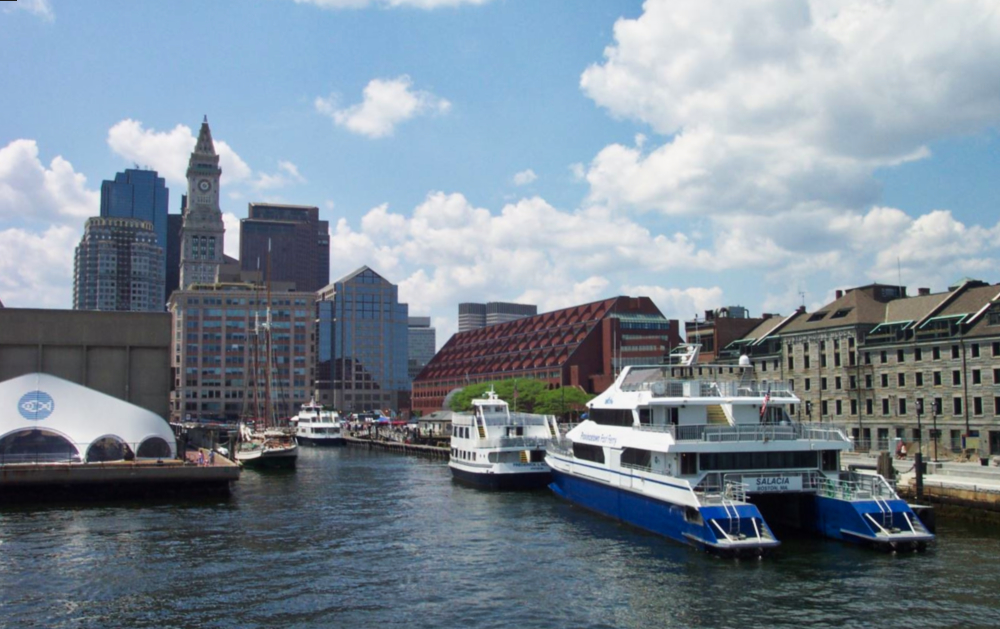
Long Warf
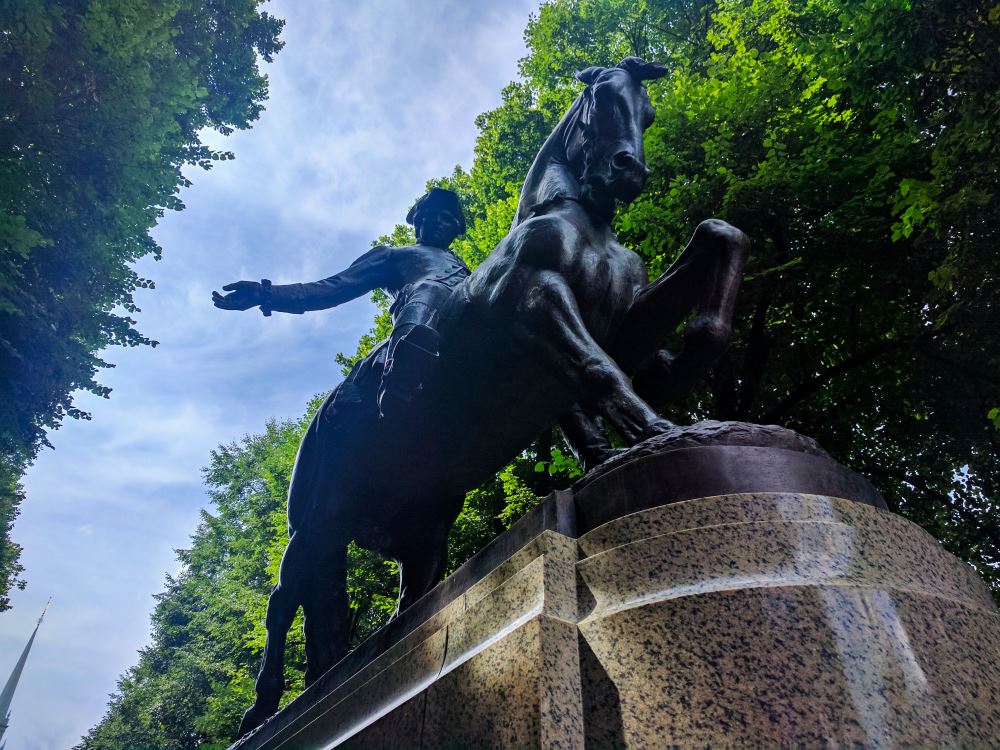
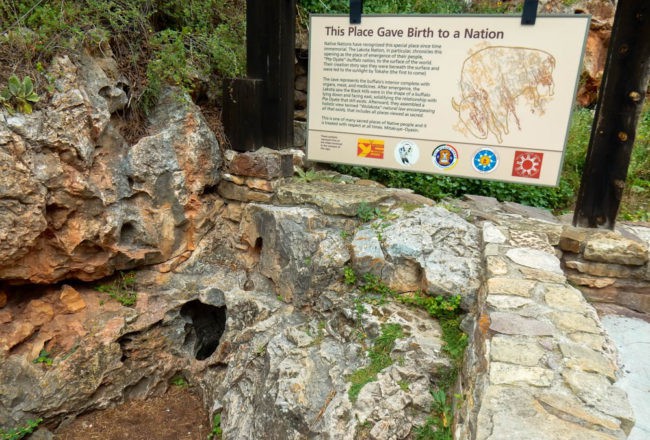

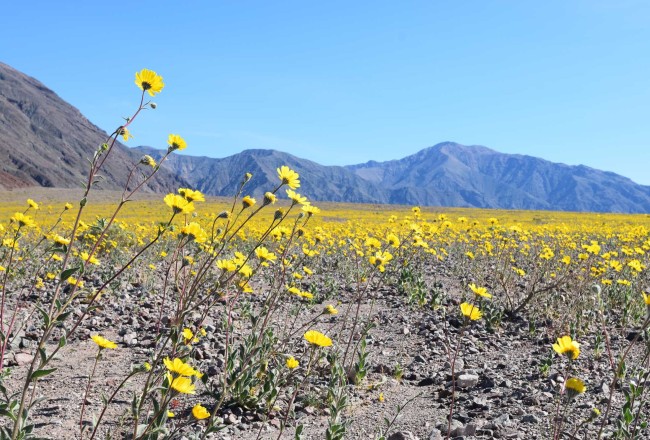


6 Comments
Merry Christmas and happy new year! We camped beside you at Fiesta Key in April and I ran across your card today and went to your website. You have been busy since April! We went to Colorado and Utah in June and loved it. I see you went too. Loved your pictures from Niagara – we road Maid of the Mist about 15 years ago and I will never forget it. Hope you are doing well. Happy travels in 2018!
Merry Christmas and Happy New Year! Thanks for stopping on our site! I do remember you from Fiesta Key. We did Colorado and Utah in late summer of 2016. It was fantastic, and we’d love to do it again soon.
This post is great! I’m thinking I might pop up to Boston in March for my birthday weekend and definitely plan to explore the Freedom Trail. I was there years ago and managed part of it, but I’d like to try and knock out the whole thing in a day, plus visit the other National Park units that are scattered around the area.
My friend was telling me not many people can see every site on the Freedom Trail in one day. They usually start at the Boston Commons side and never cross the Charleston Bridge. I really suggest downloading the Boston NPS app, its totally worth it!
Awesome! I would love to check out Boston… I’ve been there, but never really had a chance to explore. I didn’t realize that the Old State House was surrounded by all if those skyscrapers. I think that would be particularly cool to visit. Thanks for the great content! I enjoy reading your posts!
I hope you do get the chance to explore Boston. It’s full of history, amazing food, and unexpectedly pleasant July-August weather for an East Coast city.